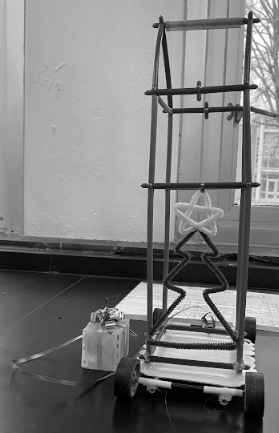NASA’s SOFIA observatory discovers water in sunlit surfaces of moon
Nasa’s SOFIA is a Boeing 747SP Jetliner designed to hold a 100-inch diameter telescope. The Modified jetliner has been in service since 2010.
November 19, 2020
Scientists at NASA revealed during a press conference on Oct. 26 that they had an “exciting new discovery about the moon,”. There is now cast-iron evidence of water on sunlit surfaces of the moon.
“This is exciting because the expectation is that any water present on the sunlit surface of the moon might not survive the lunar day” Astrophysics division director Paul Hertz claimed in reference to the moon’s lack of an atmosphere. Casey Honniball, a Postdoctoral Program fellow at NASA’s Goddard school flight center tells Popular Mechanics, “If we find a large concentration of water on the sunlit moon, we may be able to extract it and use it as a resource for exploration.”
Hertz also stated “Now we know it is there. This discovery challenges our understanding of the lunar surface and raises intriguing questions about resources relevant for deep space exploration.”
The physical exploration of the Moon began when Luna 2, a space probe launched by the Soviet Union, made an impact on the surface of the Moon on Sept 14, 1959. Prior to that the only available means of exploration have been observations from Earth.
When the Apollo astronauts returned from the moon in 1969, it was widely seen as completely dry. However, NASA’s Stratospheric Observatory for Infrared Astronomy (SOFIA) debunked this theory. Junior William Armiger commented on the discovery saying this will change “Not a lot considering they [NASA] estimate a total of one bottle of water total on the moon.”
Armiger also claimed, “…if they are able to speed up the process on which the water formed it could increase the number of trips we take to the moon.”
NASA chose SpaceX’s Starship in April, along with two other pitches, as a potential solution for landing humans on the Moon in 2024. SpaceX has also detailed plans on using Starship rockets to serve as the basis for a “Moon Base Alpha.” Elon Musk, the creator of SpaceX said in response to a question about routine space travel, “Well, this is both a NASA and a SpaceX readiness thing. So from a SpaceX readiness standpoint, my guess is we’re about six months.”, during an interview with TIME magazine.
SpaceX and NASA are targeting Saturday, November 14, for Falcon 9’s launch of Dragon’s first operational crew mission (Crew-1) to the International Space Station (ISS) from the historic Launch Complex 39A (LC-39A) at NASA’s Kennedy Space Center in Florida. Crew-1 is the first of three scheduled flights over the course of 2020 – 2021 and “paves the way for future human spaceflight,” as quoted on the official SpaceX website.







